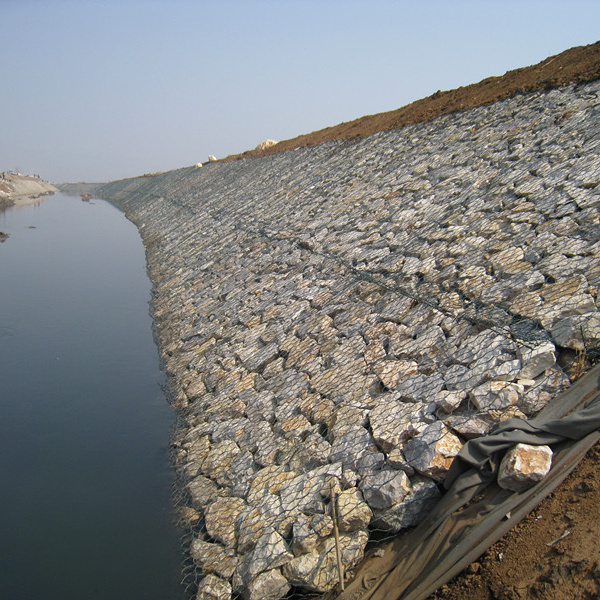Каст . 22, 2024 10:38 Back to list
Top Gabion Textures for Stunning Landscape Designs and Durable Construction Solutions
The Best Gabion Texture A Comprehensive Guide
Gabion structures have become increasingly popular in modern landscaping and civil engineering due to their durability, versatility, and aesthetic appeal. At the core of gabion design is the choice of texture, which can significantly affect both the functionality and visual impact of the installation. In this article, we delve into the best gabion textures, exploring their features, benefits, and applications.
What are Gabions?
Gabions are wire mesh containers filled with rocks, concrete, or other materials. They are used for a variety of purposes, including erosion control, retaining walls, and decorative landscaping. The term gabion originates from the Italian word gabbione, meaning big cage. Gabions can be filled with various materials, and the texture of these fills can greatly influence the overall appearance and effectiveness of the structure.
The Importance of Texture
Texture plays a pivotal role in gabion design for several reasons
1. Aesthetic Appeal The texture of the materials used can enhance the visual impact of the gabion. For instance, smooth river stones impart a sleek, contemporary look, while rough, fractured rocks lend a more rustic charm.
2. Structural Integrity The texture of the filling material can affect the stability and drainage capabilities of the gabion. Coarse textures may allow for better drainage and reduce the risk of water-related damage.
3. Ecological Considerations The choice of texture can also play a role in environmental sustainability. Natural textures can provide a more harmonious look in landscapes, blending seamlessly with the surroundings.
Popular Gabion Textures
1. Natural Stone One of the most common choices for gabion filling is natural stone. The texture of these stones can vary dramatically—smooth, round pebbles create a soft, inviting look, while jagged, angular stones give a bold, robust aesthetic. Natural stones are excellent for erosion control and can enhance the ecological value by allowing vegetation to thrive in and around the gabion.
best gabion texture

2. Recycled Materials Using crushed concrete or recycled bricks as gabion fill is an eco-friendly option that offers a unique texture. The rough, irregular surfaces of recycled materials create an industrial feel, making them ideal for modern architectures or urban landscapes. Additionally, they provide a sustainable alternative, reducing waste and promoting recycling efforts.
3. Decorative Gravel Decorative gravel is often used in gabions intended for landscaping purposes. This type of texture can include a range of colors and shapes, ensuring that the gabion complements the overall design scheme of the area. It can be particularly suited for garden borders, pathways, or decorative walls.
4. Geotextiles For certain applications, gabions are filled with geotextiles that have added functionalities. These materials may feature textured surfaces that promote plant growth or enhance drainage. They can be an excellent choice for ecological restoration projects where stability and natural integration are critical.
Selecting the Right Texture
When selecting the best gabion texture for your project, consider the following factors
- Purpose Determine the primary function of the gabion. Is it purely decorative, or does it require structural integrity for erosion control? - Surroundings Evaluate the surrounding environment. Natural textures may work better in rural or wooded areas, while sleek, modern textures might suit urban settings.
- Durability Ensure the chosen texture is durable and weather-resistant, especially if the gabion will be exposed to harsh environmental conditions.
- Maintenance Consider how much maintenance you are willing to undertake. Some textures may require more upkeep than others, particularly those that are prone to vegetation growth.
Conclusion
In conclusion, choosing the best gabion texture can profoundly influence both the functionality and aesthetics of a project. Whether you opt for natural stones, recycled materials, or decorative gravel, understanding the unique features and benefits of each type can help you make an informed decision. By thoughtfully considering the design, purpose, and environment of your gabion structure, you can create a stunning installation that not only enhances the landscape but also serves its intended purpose effectively.
-
The Role of Galvanized Gabion Mesh in Riverbank Protection
NewsJun.26,2025
-
The Role of Gabion Basket Raised Bed in Sustainable Gardening
NewsJun.26,2025
-
Quality Assurance of Wire Mesh Gabion Baskets
NewsJun.26,2025
-
Installation Guide for Welded Gabion Box
NewsJun.26,2025
-
How to Choose the Right Gabion Box
NewsJun.26,2025
-
Different Types of Gabion Wire Mesh
NewsJun.26,2025
-
Why PVC Coated Gabion Mattress Is the Best Solution for Long-Term Erosion Control
NewsMay.23,2025






